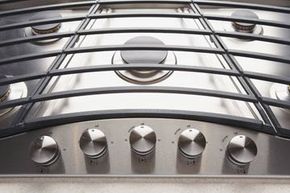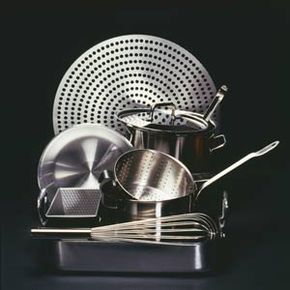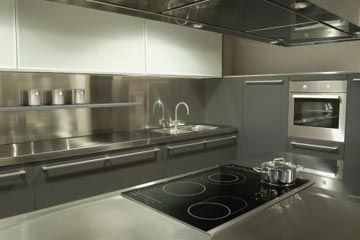From bathroom sinks and kitchen appliances to New York's Chrysler Building and St. Louis' Gateway Arch, the world sometimes seems like it's covered in stainless steel. And why not? The material is not only sturdy and versatile but also "stainless." At least that's what the name implies [source: Pistor].
Stainless steel is a family of materials that gets its handle from corrosion- and oxidation-resistant properties that protect it from rust and unsightly blotches. Generally, the various steels are a mixture of iron and at least 10.5 percent chromium (sometimes rounded to 11 percent by engineers). When the latter chemical element is exposed to oxygen and moisture (for instance when a stainless steel pan is nicked or dinged), it produces a thin oxide film that coats the product. This self-repairing feature of stainless steel ensures the object always looks smooth and shiny [source: International Stainless Steel Forum].
Advertisement
Various European and American metallurgists claim to have fathered this wondrous material. We do know that Krupp Iron Works in Germany created an acid-resistant steel as early as 1908, which was used for the hull of a yacht. Two other Germans, P. Monnartz and W. Borchers, discovered the relationship between chromium content and corrosion resistance -- that metal containing at least 10.5 percent chromium had a greater resistance to corrosion [source: British Stainless Steel Association]. Meanwhile, American Elwood Haynes patented one type of stainless steel precursor in 1911, and English researcher Harry Brearley developed a similar material around the same time. After a four-year dust-up in which Haynes successfully opposed Brearley's attempt to patent his version of the steel, the two pooled resources to market their wares as the American Stainless Steel Company. These and other stainless metals found their way into cutlery, airplane parts, golf clubs, and other items almost immediately [source: Cobb].
But not all stainless steel is created equal.
Advertisement


